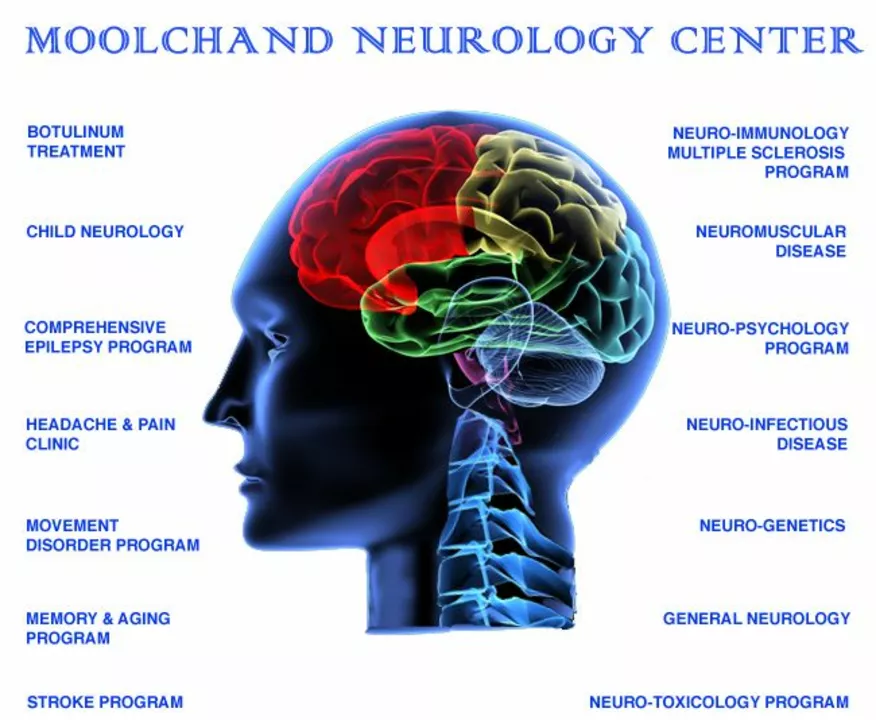multiple sclerosis — signs, tests, treatments and day-to-day tips
What if your nerves started losing insulation? That image explains MS in plain terms: the immune system attacks myelin, the protective coating around nerves, and that can slow or scramble signals between brain and body. Most people learn they have MS between ages 20 and 50, and women get it more often than men.
Early symptoms are often subtle: numbness or tingling in an arm or leg, blurred or double vision, sudden fatigue that wrecks your day, or trouble with balance and walking. Symptoms can come and go (relapsing) or slowly get worse over time (progressive). If you notice new persistent weakness, vision loss, or problems with coordination, see a neurologist soon.
How MS is diagnosed
No single test proves MS. Doctors mainly rely on your history and an MRI of the brain and spinal cord to find lesions caused by demyelination. Sometimes a lumbar puncture (spinal tap) looks for specific immune markers in the cerebrospinal fluid. Evoked potentials measure nerve signal speed. These tests together help rule out other causes and confirm MS.
Treatments that change the course
Treatment splits into two goals: control attacks and reduce long-term damage. For relapses, doctors often use short courses of high-dose steroids to calm inflammation. To slow disease progression, disease-modifying therapies (DMTs) are the main tool. Options include injectables (like interferon-beta, glatiramer acetate), oral drugs (fingolimod, dimethyl fumarate, teriflunomide), and infused or monoclonal antibody treatments (natalizumab, ocrelizumab). Which one fits you depends on how active the disease is, side effects you can tolerate, and other personal health issues.
Don’t expect a one-size-fits-all answer—talk openly with your neurologist about benefits, risks, and monitoring. Many DMTs reduce relapses and MRI activity but require regular blood tests and infection screening.
Beyond DMTs, symptom care matters. Spasticity, pain, bladder problems, sexual dysfunction, and cognitive changes all have treatments: physical therapy, targeted medications (baclofen, tizanidine for spasticity), bladder training, and rehab programs to improve walking and daily function.
Simple lifestyle moves help a lot. Regular low-impact exercise keeps muscles and balance stronger. Plan activities around energy peaks, use cooling methods if heat makes symptoms worse, and prioritize sleep. Mental health matters—anxiety and depression are common and treatable.
Make a care team: neurologist, physical therapist, occupational therapist, urologist or continence nurse when needed, and a counselor. Keep records of relapses, medication changes, and side effects so your team can make smart decisions.
Got new or worsening symptoms? Don’t wait. Fast review and early treatment can change outcomes. If you want more practical reads, check related guides and patient stories on this site to help you manage meds, fatigue, and daily life with MS.

The Connection Between Spastic Muscle States and Multiple Sclerosis
As a blogger, I recently came across some fascinating research on the connection between spastic muscle states and Multiple Sclerosis (MS). It turns out that spasticity is quite common in people with MS, affecting up to 80% of those diagnosed. This leads to muscle stiffness, spasms, and difficulty with movement, having a significant impact on a person's quality of life. Researchers believe that this spasticity results from damage to the nerves within the central nervous system, which disrupts the normal communication between the brain and muscles. Understanding this connection better could potentially lead to more effective treatments for managing the symptoms of MS and improving the lives of those affected.
- Health and Wellness (58)
- Drug Information (45)
- Pharmacy Information (19)
- Medical Conditions (17)
- Supplements (4)
- Diabetes (3)
- Travel Health (2)
- Parenting (2)
- Mental Health (2)
- Heart Health (1)
-
Understanding Pharyngeal Mucous Membranes and their Link to Post-Nasal Drip
15 May 2024 -
PhosLo Uses, Side Effects, and Tips for Kidney Health
20 Jun 2025 -
From ANDA to Shelf: How Generic Drugs Reach Retail Pharmacies
21 Dec 2025 -
Osteoarthritis and Travel: Tips for Managing Symptoms on the Go
21 May 2023 -
Mail-Order Pharmacy Safety: How Temperature, Timing, and Tracking Keep Your Medications Safe
1 Dec 2025

6.05.23
Alistair Mukondiwa
20